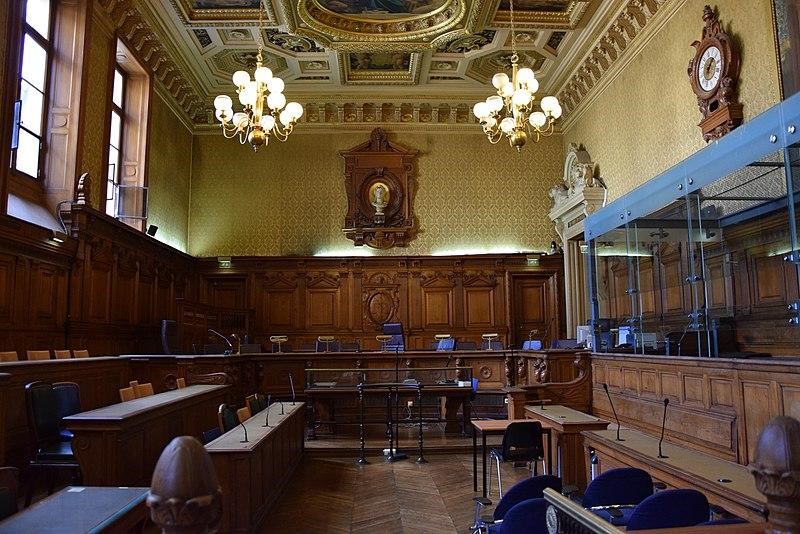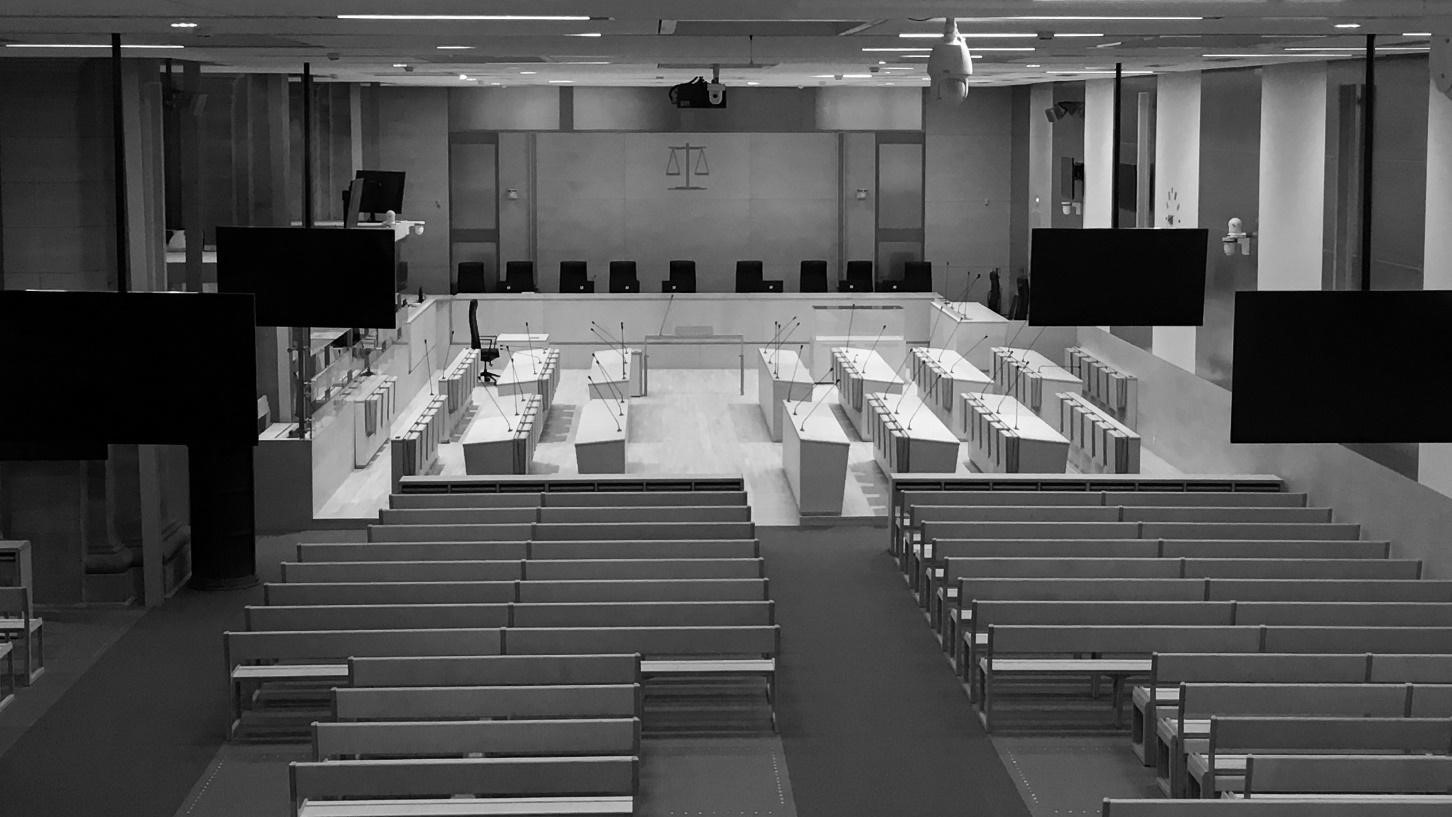Our multidisciplinary trial ethnography commenced in 2017 with the beginning of the first jihadist terrorism cases at the French Assize Court. Situated in the Palais de Justice in the city center, it has exclusive jurisdiction over cases that are punishable by over ten years’ imprisonment.

The collecting of first-hand data on hundreds of hearing days was made possible by our gradual and intimate immersion in the courthouse, along different sites, both formal and informal. Being immersed in courtrooms transforms the researcher into part of the judicial scene (Cefaï, D., 2010). However, this requires establishing legitimacy from the actors. At first, even having the hearing calendar was a significant accomplishment, the result of extensive negotiation with courts’ clerks. Securing access and defining the boundaries of our presence within this space had evolved over the time. At the beginning, we could enter the courtroom incognito with our notebooks, being a part of a small audience who had little interest in us. We could simply merge into the room without being singled out. With time, however, the way we were perceived by the actors evolved. As we became more and more visible, our status gradually changed: we were allowed to bring our laptops and even use phones in the courtroom. Access to legal documents was easier and we became more and more familiar with court’s professionals, who provided us with inside information and documents from, and off, the record. This process reached its peak at the start of the Charlie Hebdo and Bataclan trials. There was now an official list of accreditations to access the courtroom. Dozens of different researchers were working on various projects, under the umbrella of a new collective called Promete. As journalists and researchers were attributed to the same sitting space, we could mix together: we exchanged information and shared documents. These personal relations established during the long hearing days resulted in the researchers often being approached by the media: we were all invited to be interviewed by all of the major media, both local and international. We have been developing together the narratives about the trials. Indeed, during the ‘historic trials’, our position was visible and identifiable by the judicial authorities and the general public. Emotion, our emotions, also played a significant role. We encountered the same people daily, developing close relationships with some of them, sharing lunch and late evenings. Naturally, it wasn’t all fascinating; we also endured lengthy boring moments such as during the technical testimonies.

Open Access or for ‘Insiders’ Only?
In France, there are no hearing transcriptions available. One must be present in the courtroom throughout the entire trial to have a record of what is being said. Further, while judgments are public documents, they are not easily accessible. On the other hand, while the investigation files are secret - we encounter a few ‘exceptions’. For example, on the eve of the Bataclan trial, a comic book was published, revealing the facts as established in the investigation file. It was written by a Le Monde journalist with information based on the investigation file. To obtain access to ‘confidential’ documents, we developed a network of personal ties with journalists or lawyers, and sometimes even the judges. It very quickly became apparent that obtaining the indictments was done as a favour – part of a ritual for those recognised as being ‘part of the scene’. Getting access to these documents, including the decision itself, gradually improved, as did our position as ‘insiders’. These ‘deals’ create bonds of obligation and collusion. Discretion is required.
The Alternative Sites: The Coffee, the Security Queue, the Yard
Once ‘inside’, we developed our own positioning and mode of observation, which requires a certain level of modesty, curiosity, and sensitivity. The researcher does not need to know in advance exactly what they are looking for: in a flexible and open manner, they connect with the space and explore situations. Beyond the courtrooms, our immersion extended to include other spaces such as the cafeteria, the courtyard, the security lines. This allowed for the collection of unofficial information, anecdotes, and personal insights, obtained by discussions and occasional exchange in the corridors, during the suspension of the sessions, or while waiting for verdicts. This led to a more nuanced understanding through the lens of routine human exchanges.
Interaction can be transformative. During long trials, we could further observe how these sites were transformed into a space with its own social environment, which redefined the roles of those involved. On the night of the verdict of the Bataclan trial, after ten months sharing this collective experience, the trial was over, and we took part in an unforgettable scene: prosecutors, defence lawyers, assistant judges without robes, victims, defendants, journalists and researchers all spontaneously gathered at ‘Les Deux Palais’, a café, just across the road. It was surrealist: within a mingling crowd, everybody was drinking and talking to each other. Three defendants, who were now free, as their punishment amounted to their pre-trial detention period, asked for forgiveness from the victims and shook hands. It was a very powerful gathering, which shows the importance of these informal moments and spaces, which ultimately contribute to ‘doing justice’.
Interviews
From the start, we had relatively privileged access to the judges in order to carry out interviews, for three main reasons. Firstly, the research was financed by the Ministry of Justice, and they facilitated access by providing an official letter. Secondly, one of the researchers was a judge earlier in his career and has become an author of high esteem, which has facilitated access to various players in the justice system. Lastly, many of the judges were personally interested in academic research in general, and more specifically on terrorism and their own work. We exchanged further communication with those involved while we presented and tested our hypotheses, in the context of lectures and conferences at which they participated. These exchanges strengthened our immersion and our ability to understand the way in which these judicial actors operate.
The Challenges: Observer or Player? On the Distance and Positioning of the Researchers
As the research evolved, it allowed us to ‘take an active role in the institutions and phenomena we studied’ (Starr, and Goodale, 2002, 7). This position raises important epistemological and ethical questions concerning the role of researchers, who must be conscious of their own impact. The longer the immersion is, the more the dividing line fades between the actors and the observers, and the relations between them evolve. Spending so much time in close proximity to the actors involved raises the question: how do we say what we cannot say?
Ethnography is an immersive method, embedded in the environment it studies. In our case, we were dealing with a field of research with major political and social importance. There was something addictive in observing justice, being in the courtroom every day, hearing fascinating human stories, being part of a collective. And yet, the researcher has to remove themselves from their immersed experience and be able to translate the endless anecdotes and experiences into theoretical framing. Being able to return from the courtroom, to be alone and reflexive was a challenge. Writing, in itself, was a crucial part of this process. However, before entering that phase, we took the necessary time to disconnect from the field research. Our book, coauthored by four members of the research group, is going to be published in early 2026 with Cambridge university press (law and society series). It is the result of years of research, and yet, it can only reflect our own stance and distance from the object of our study.